Arts & Culture
7 Modern Filipino Movies to Add to Your Bucket List
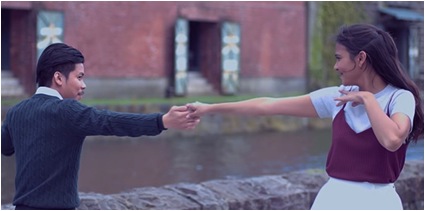

From the film, “Kita Kita”
The Filipino movie is worth dying to watch for and the future is bright for Philippine cinema! The Philippine movie industry has proved itself to be a promising feat, especially with the rise of new and talented filmmakers.
With the likes of Antoinette Jadaone (That Thing Called Tadhana and Love You To the Stars and Back) and Sigrid Bernardo (Kita Kita), these filmmakers have created themselves players of a “new game” in the Philippine movie industry, experimenting with uncommon storylines and techniques, and screening them to public theaters in areas where masses usually gather.
Although the much-loved rom-com is still a popular genre, several Filipino movies involving action and thrill proved it could create stimuli among the perceptive Filipino audience.

From the movie, “That Thing Callled Tadhana”
Since June is the month to wave the Philippine flag with honor, what better way to complete this month-long celebration than to add these to-die-for flicks that will make your #ProudlyPinoy heart skip a beat? So treat yourself to a break, invite some company and pop in these movies that will no doubt give you a great time.
Going on a movie marathon by yourself or with friends and family is not only a fun way to bond, but also a way to support locally produced films and to truly appreciate the Filipino mind.
We listed down some movies recommended by family and friends. Some films on this list may be something you may have watched already (Tick them off to your list, then!) So pop that corn, get a large drink and sit down because these movies are going to blow your mind, while simultaneously poking that proud Filipino heart of yours.
100 Tula Para kay Stella
Directed by Paul Laxamana
100 poems = 100 reasons why the stuttering boy loves the girl in the black lipstick.
Psychology freshman and poet, Fidel, meets and falls in love with fellow freshman Stella, a rocker who prefers her band than her studies. Having difficulty to express his affection due to his stuttering, Fidel secretly writes her 100 poems in a fleeting course of four years.
Meanwhile, Stella goes through a rough patch in her life. The only thing she wants to achieve in her life is to score a record label and be the most famous rock star in the country. Along the way, she struggles to find love and her true self, oblivious to the fact that one person has set his heart for her.
This heart-wrenching film is one unforgettable story. And since everyone loves a heart-breaking story, it’s no wonder that this was the most suggested one of the bunch. The film depicts love in its most sincerest and silent forms, and how it could turn things around in the most unexpected ways.
Heneral Luna
Directed by Jerold Tarog
The ultimate decision between self and country.
The year is 1898, and the Philippines has just been declared independent from the Spanish colony. Yet, a new problem arises our revolutionary leaders– the Americans. General Antonio Luna, with his great love of country than of himself, fights tremendously to save the Philippines from yet another foreign colonizer, and sees beyond the Americans’ sweet advances that entices his fellow leaders.
Heneral Luna takes us way beyond what we’ve learned from our History classes. It’s one of the most brilliant historical films produced in the Philippines. If you have seen this film, then you must agree on me on that note. If you haven’t, then I’ve got three words for you: Watch. It. Now.
That Thing Called Tadhana
Directed by Antoinette Jadaone
Where do broken hearts go? It takes you where you were meant to be.
Anthony and Mace meet at a rather unpleasant situation; Mace cries over which of her belongings to let go while relating everything to her recent breakup, while Anthony finds himself lending a hand to the poor lady at the airport in Rome. Upon arriving in the Philippines, they go on an unexpected journey to find a way to mend their broken hearts
On their journey, they help each other forget their own disappointment and heartbreaks in recent and previous events, while developing a closeness that deepens as they get to know each other more.
With its quirky statements and cheesy “hugot” lines, That Thing Called Tadhana will make you believe in love again. The film stirs from the usual Filipino love story format seen in commercial films with its simplicity and realistic vibes, the reason why audiences were captivated by this unlikely story. It catapulted to the success and recognition of Jadaone as a fierce and upcoming director of Philippine cinema.
Love You to the Stars and Back
Directed by Antoinette Jadaone
Their love goes where the road takes them; part of it involves getting captured by aliens.
Mika, an eccentric and awkward girl, set out for a road trip after feeling out of place at home. She decides to go to Mt. Milagros, a place her mother used to talk to her about, to get captured by aliens. Along the way, she accidentally meets Caloy, a good-humored boy and decides to give him a free ride until he reaches his destination.
Mika is surprised when she learns that Caloy has cancer. Despite his condition, he accepts this and remains positive and joyful. They both embark on a series of adventures and misadventures that unexpectedly leads them to a memorable romance even at such a young age. They eventually arrive at their destination, learning an important lesson on love and life.
This movie is another setback for Barreto and Garcia, this being their second movie as a tandem. They have really spiced up audiences with their charm and chemistry, even with the simplicity of the storyline. Jadaone has yet again turned herself away from the usual rom-com and delivered.
Patay Na Si Hesus
Directed by Victor Villanueva
This is not a road trip movie; this is a funeral.
Iyay informs her three adult kids that their estranged father, Hesus, has passed away. Despite the reluctance of her children, she pushes them and her sister Lucy to join her on a road trip from Cebu to Dumaguete to attend the funeral
This Cebuano dark comedy was one of the crowd favorites during last year’s Pista ng Pelikulang Pilipino film festival. Jaclyn Jose, having won the Best Actress award at the 2016 Cannes Film festival, takes a different take from her usual dramatic roles. In this film she proves that she can also do the comedic role. So put on your seatbelts, and take the dreary but funny road to Hesus’ funeral.
Kita Kita
Director- Sigrid Bernardo
A heartwarming story of an unlikely couple who meets and proves to themselves that love is not blind.
Lea, a Filipina tourist guide who lives in Sapporo, Japan loses her eyesight after seeing her fiancé cheating on her. As she lives her life in temporary blindness, she encounters Tonyo, her neighbor who is also Filipino. Tonyo tries to cheer Lea up by doing her a few favors. Once he gained her trust, the both of them visit Sapporo’s tourist destinations.
On the night that Lea finally regains her eyesight, she sees Tonyo happily waving at her from the other end of the street, but he gets hit by a vehicle afterwards. Days after, Lea visits Tonyo’s house and discovers a lot more about Tonyo. Later on, she revisits all the places she and Tonyo used to go, carrying with her always a blindfold.
With this unlikely duo, this movie shows you that love is truly unconditional. It knows know condition or circumstances; it is as it is. Be prepared, though, because tears may also be involved when watching this film.
Ang Larawan
Directed by Loy Arcenas
A high-price bidding war of an unlikely masterpiece. In song form!
A throwback to the American colonization of the Philippines, this movie was based on a play titled Larawan by national artist Nick Joaquin. The film circles around two sisters, Candidad and Paula Marasigan, who find themselves in a financial crisis after their father, Don Lorenzo was caught in a recluse and has stopped painting for a long time now. To get some money, they take in a boarder named Tony Javier.
Meanwhile, a self-portrait made by Don Lorenzo sparks the interest of many high-profile personalities. Although the bid price could help them ease their way out of their financial problems, Candidad and Paula fear that they will lose such a precious treasure from their family. From there on, the two sisters shall choose between family and stability.
This is a perfect film to watch with your family, especially that the story surrounds one as well. Aside from that, it also gives a clear picture of the lifestyle of that time, when materialism and consumerism were on the rise. With an original score composed by the iconic Ryan Cayabyab, this Filipino musical will surely captivate you.
Arts & Culture
Visayas Art Fair Year 5: Infinite Perspectives, Unbound Creativity
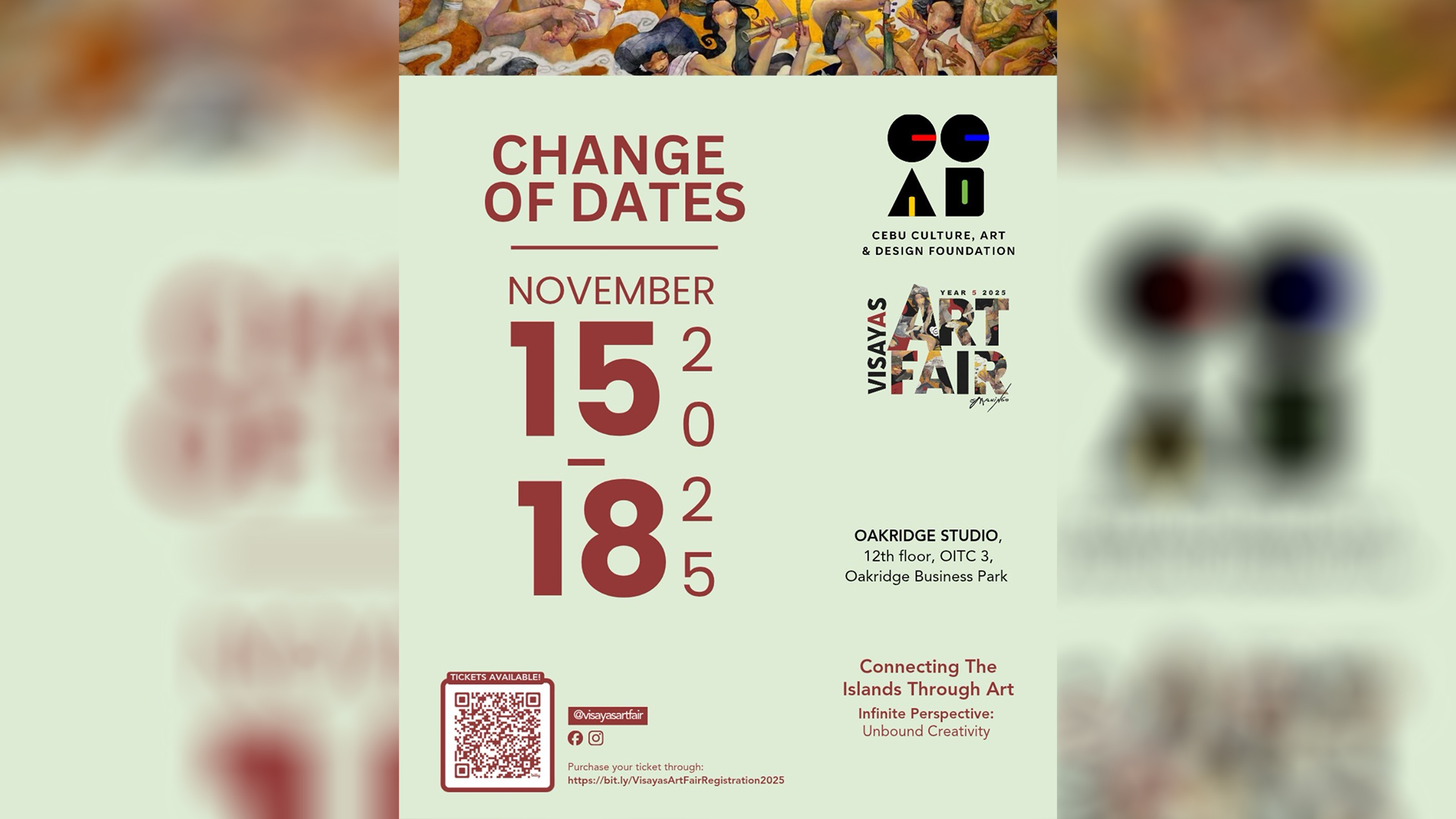
by Jing Ramos
This year’s Visayas Art Fair marks its 5th anniversary, celebrating the theme “Infinite Perspectives: Unbound Creativity.” The fair continues its mission of bridging creativity, culture, and community in the country. This milestone edition strengthens its partnership with the National Commission for Culture and the Arts and expands collaborations with regional art organizations and collectives—reinforcing its role as a unifying platform for Philippine art.
VAF5 features the works of Gil Francis Maningo, honoring the mastery of his gold leaf technique on opulent portraits of the Visayan muse Carmela, reflecting spiritual awareness.

Gil Francis Maningo is celebrated for his gold leaf technique.
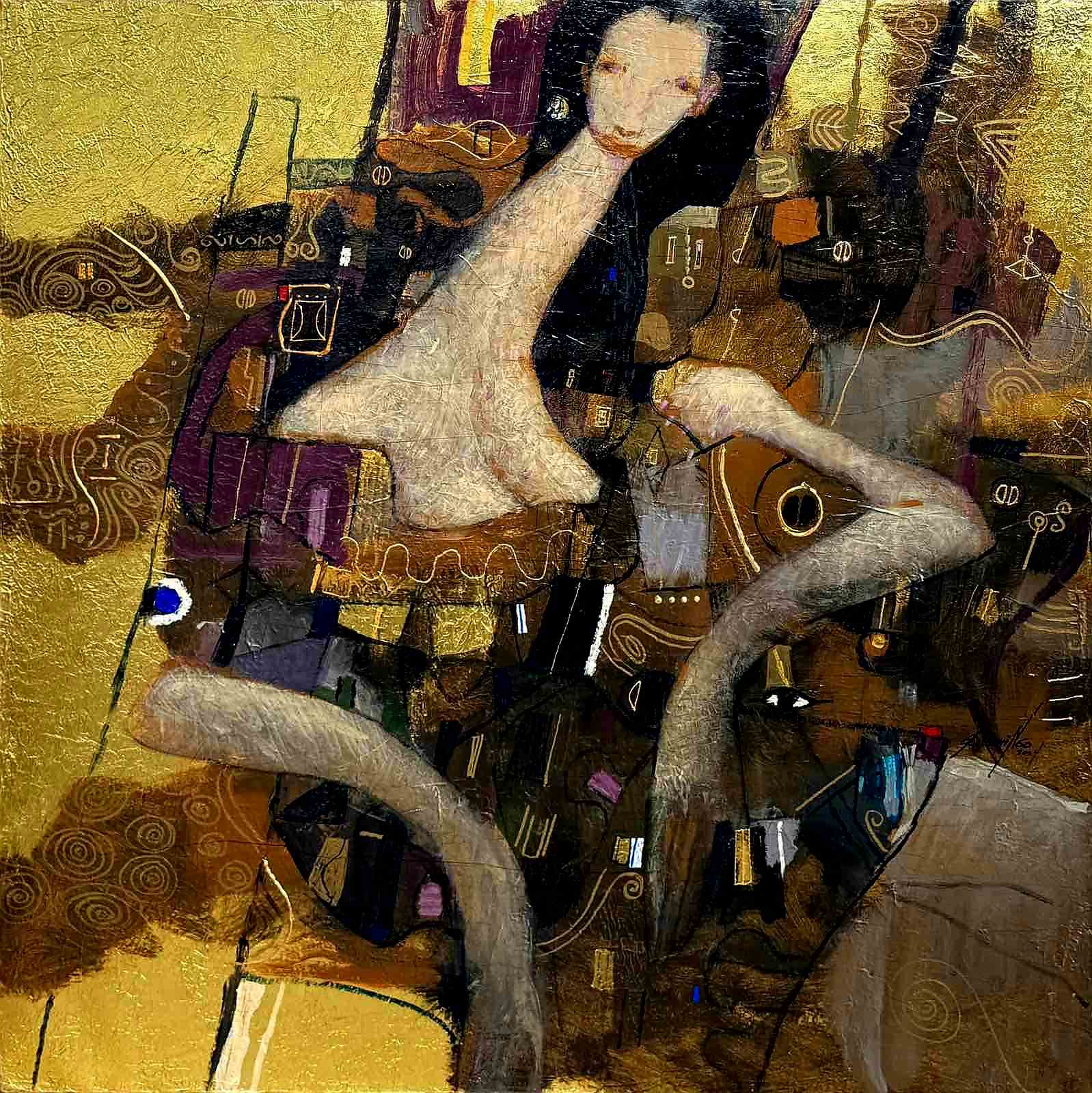
Gil Francis Maningo’s recurring theme of his Visayan muse “Carmela”.
Another featured artist is Danny Rayos del Sol, whose religious iconography of Marian-inspired portraits offers a profound meditation on the sacred and the sublime. This collaboration between two visual artists sparks a dialogue on the Visayan spirit of creativity and resilience. Titled “Pasinaya,” this dual showcase explores gold leaf as a medium of light and transcendence.

Artist Danny Reyes del Sol

Danny Reyes del Sol’s religious iconography.
Now in its fifth year, the Visayas Art Fair has influenced a community of artists, gallerists, brokers, collectors, museum curators, and art critics—constructing a narrative that shapes how we approach and understand the artist and his work. This combination of factors, destined for popular consumption, illustrates the ways in which art and current culture have found common ground in a milieu enriched by the promise of increased revenue and the growing value of artworks.
Laurie Boquiren, Chairman of the Visayas Art Fair, elaborates on the theme, expressing a vision that celebrates the boundless imagination of unique artistic voices:
“Infinite Perspectives speaks of the countless ways artists see, interpret, and transform the world around them—reminding us that creativity knows no single point of view. Unbound Creativity embodies freedom from convention and controlled expression, allowing every artist to explore and experiment without borders.”
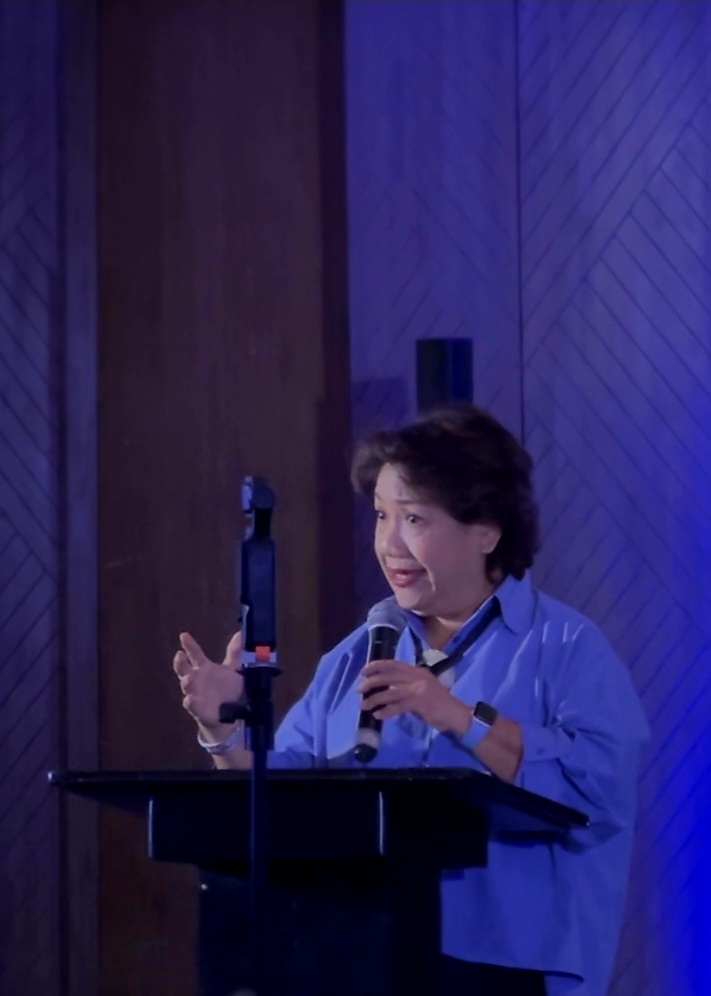
Laurie Boquiren, Chairman of the Visayas Art Fair has tirelessly championed the creative arts for the past five years.
Arts & Culture
Kultura. Kapital. Kasalukuyan: Art that Speaks of Today

by Jose Carlos G. Campos, Board of Trustees National Museum of the Philippines
The National Museum of the Philippines (NMP) and the Bangko Sentral ng Pilipinas (BSP) recently teamed up to prove that money isn’t just for counting—it’s also for curating! Their latest joint exhibition, Kultura. Kapital. Kasalukuyan: Contemporary Art from the Bangko Sentral ng Pilipinas Collection, is now open, and it’s a real treat for art lovers and culture buffs alike.
On display are gems from the BSP’s contemporary art collection, including masterpieces by National Artist Benedicto Cabrera (Bencab), along with works by Onib Olmedo, Brenda Fajardo, Antipas Delotavo, Edgar Talusan Fernandez, and many more. Some of the artists even showed up in person—Charlie Co, Junyee, Imelda Cajipe-Endaya, Demi Padua, Joey Cobcobo, Leonard Aguinaldo, Gerardo Tan, Melvin Culaba—while others sent their family representatives, like Mayumi Habulan and Jeudi Garibay. Talk about art running in the family!
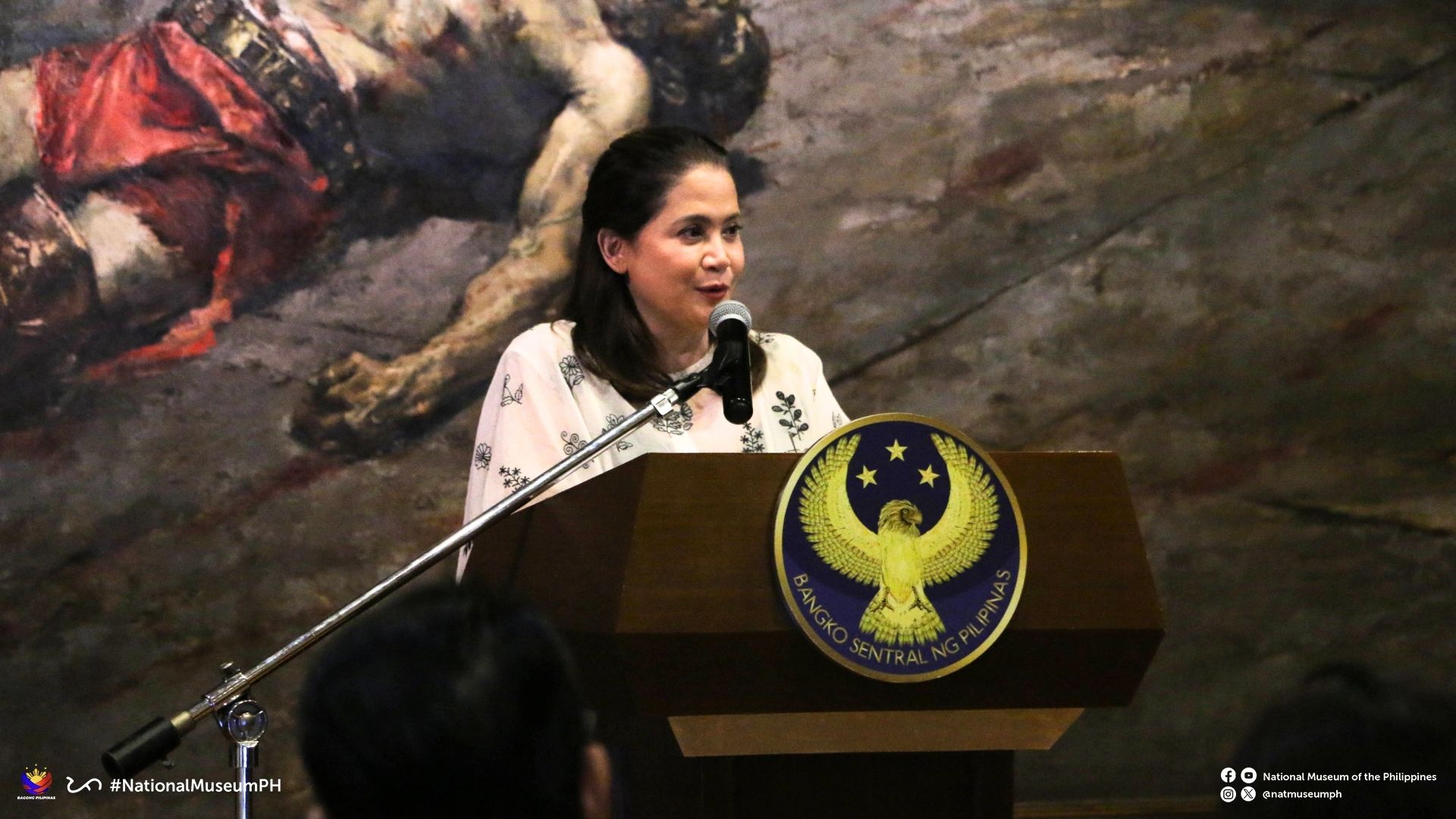
Deputy Governor General of the BSP, Berna Romulo Puyat
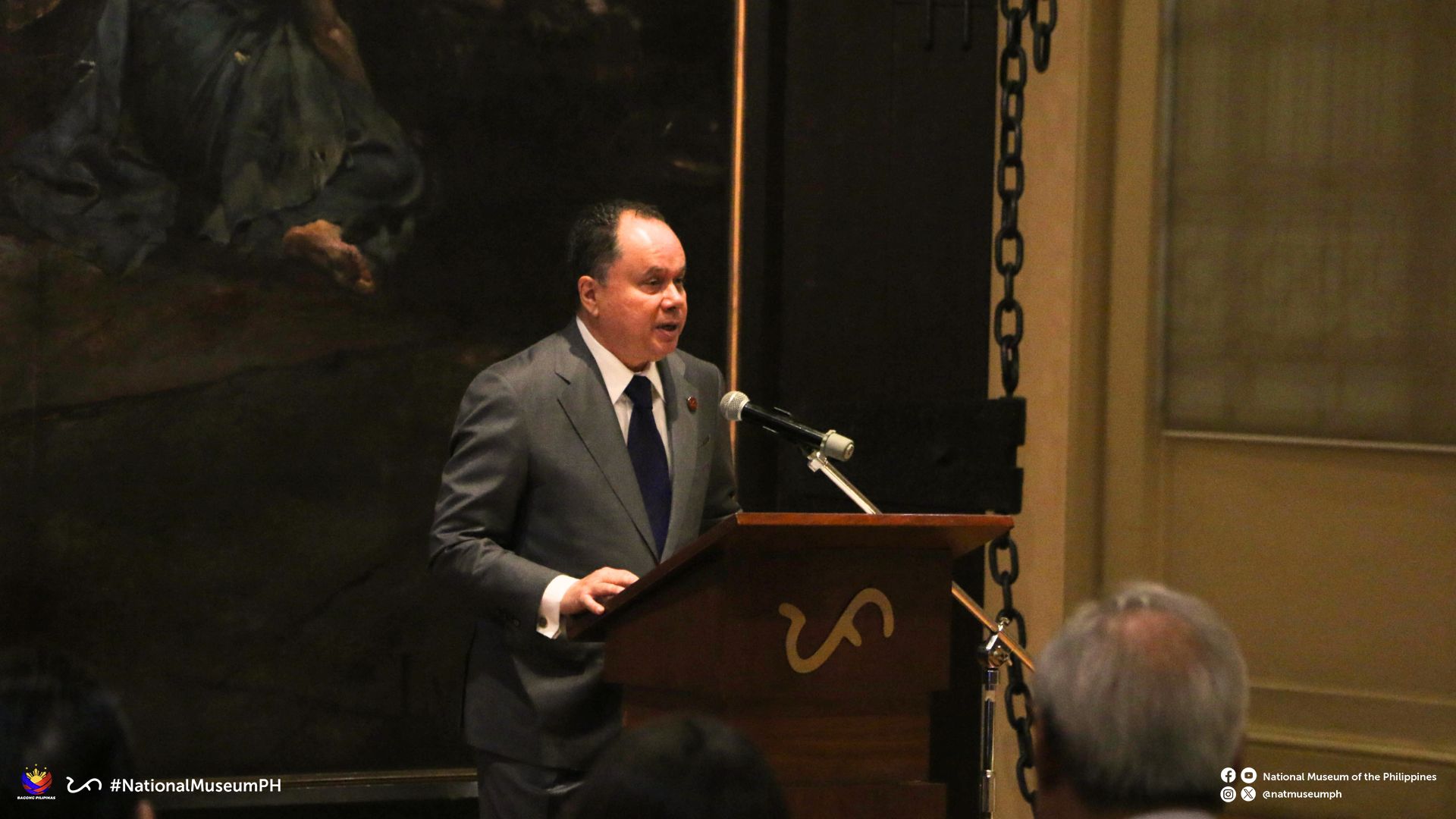
Chairman of NMP, Andoni Aboitiz
The BSP Governor Eli M. Remolona, Jr. and members of the Monetary Board joined the event, alongside former BSP Governor Amando M. Tetangco, Jr., Ms. Tess Espenilla (wife of the late Nestor A. Espenilla, Jr.), and the ever-graceful former Central Bank Governor Jaime C. Laya, who gave a short but enlightening talk about the BSP art collection.
From the NMP, Chairman Andoni Aboitiz, Director-General Jeremy Barns, and fellow trustees NCCA Chairman Victorino Mapa Manalo, Carlo Ebeo, and Jose Carlos Garcia-Campos also graced the occasion. Chairman Aboitiz expressed gratitude to the BSP for renewing its partnership, calling the exhibition a shining example of how financial institutions can also enrich our cultural wealth.
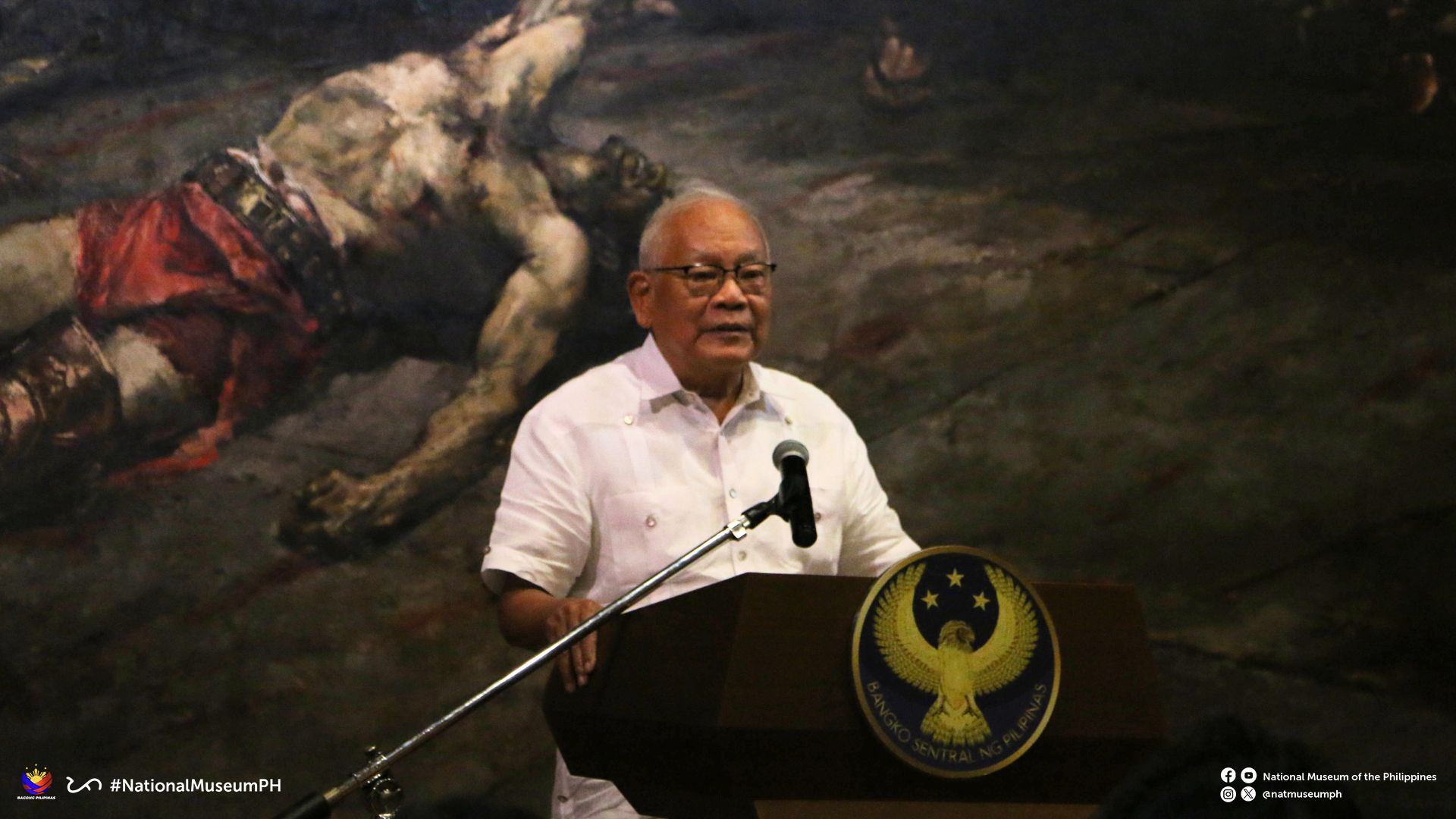
Former Governor of BSP Jaime Laya
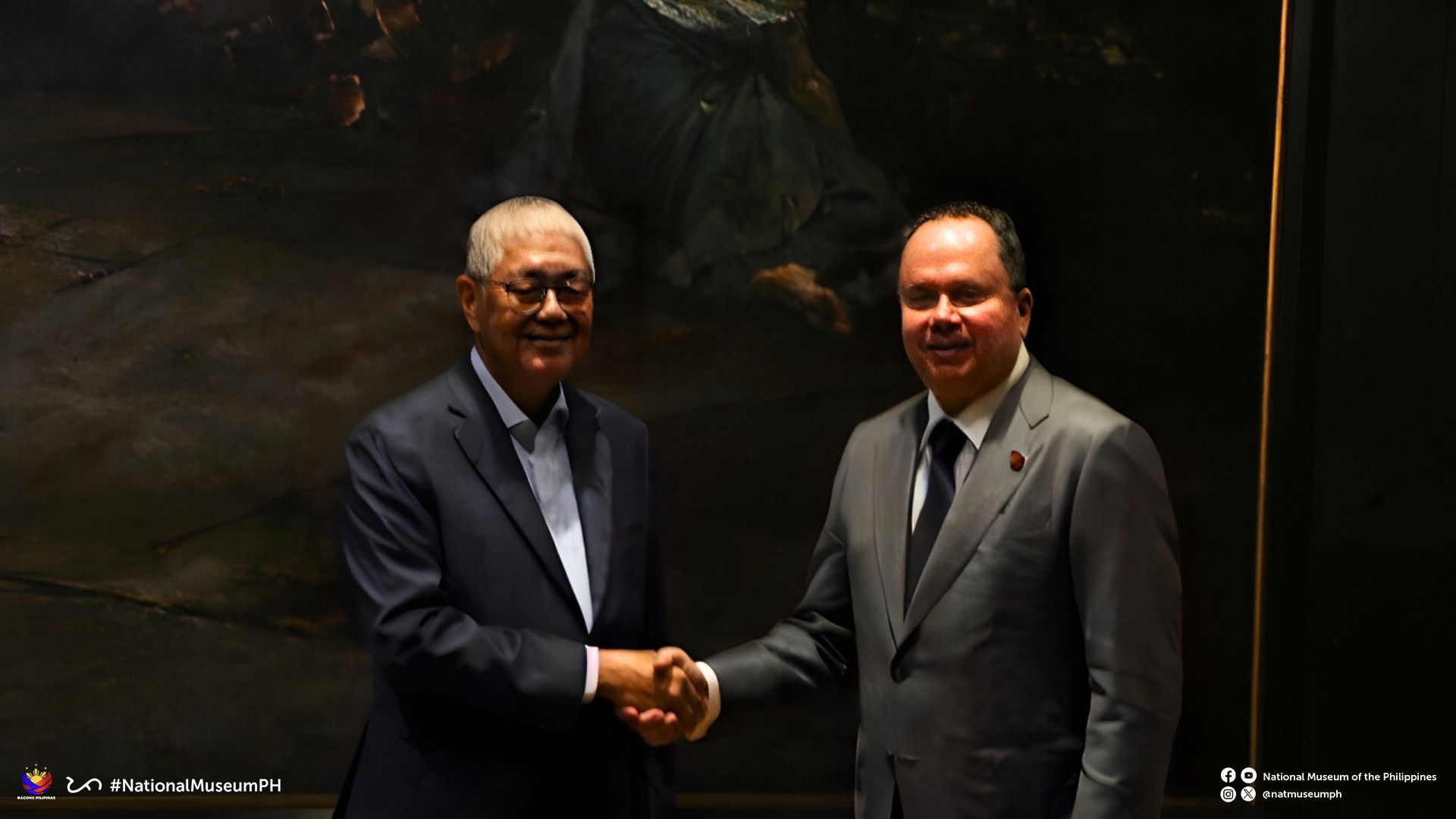
Governor of BSP Eli M. Remona and Chairman of NMP Board Andoni Aboitiz
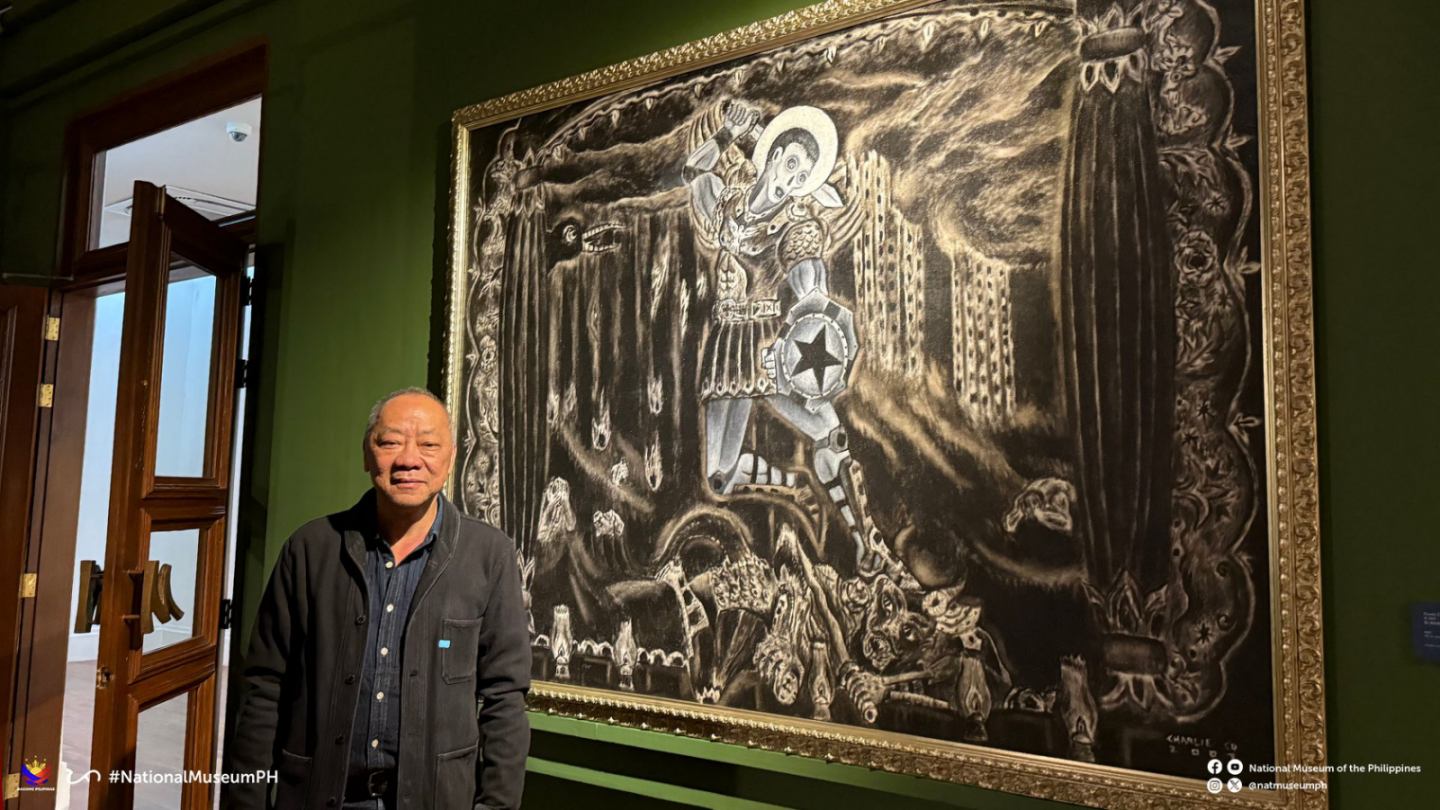
Artist Charlie Co
Before the official launch, a special media preview was held on 5 August, hosted by BSP Deputy Governor Bernadette Romulo-Puyat and DG Jeremy Barns. It gave lucky guests a sneak peek at the collection—because sometimes, even art likes to play “hard to get.”
The exhibition Kultura. Kapital. Kasalukuyan will run until November 2027 at Galleries XVIII and XIX, 3/F, National Museum of Fine Arts. Doors are open daily, 9:00 AM to 6:00 PM. So if you’re looking for something enriching that won’t hurt your wallet (admission is free!), this is your sign to visit. After all, the best kind of interest is cultural interest.

Monetary Board of the BSP, Walter C. Wassmer
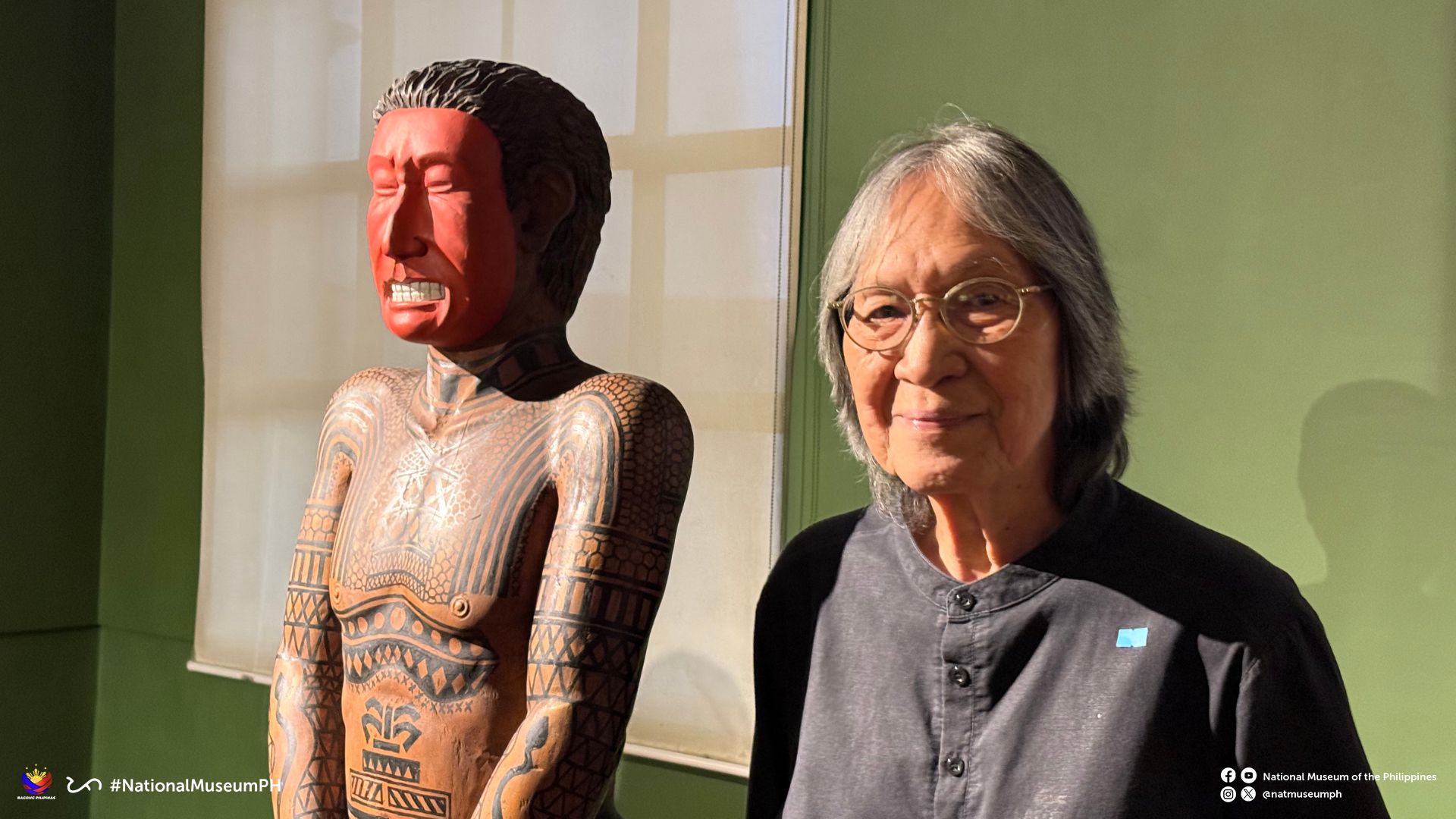
Luis Yee, Jr. aka ‘Junyee’ The Artist beside his Sculpture
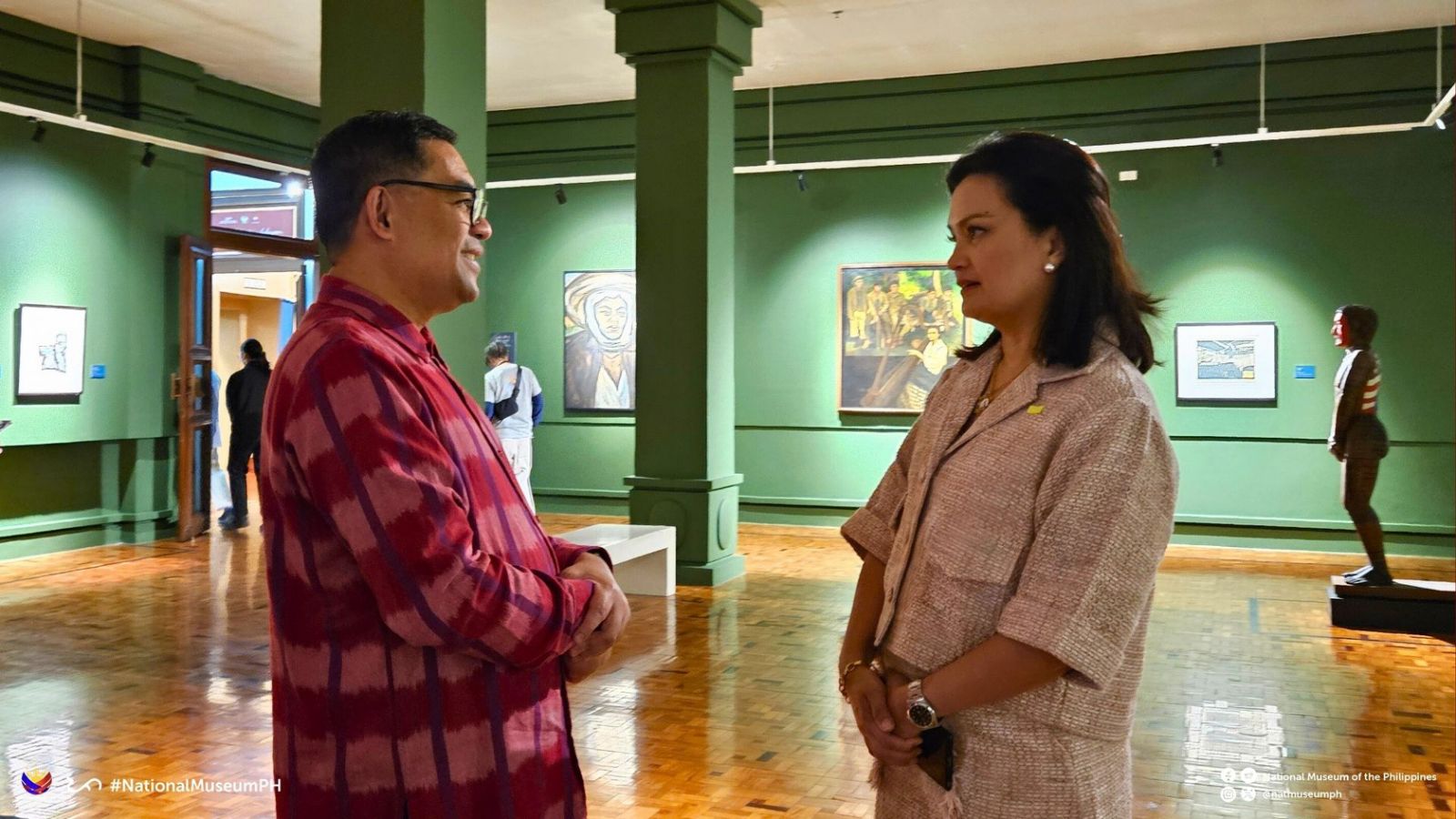
Arvin Manuel Villalon, Acting Deputy Director General for Museums, NMP with Ms. Daphne Osena Paez
Arts & Culture
Asia’s Fashion Czar I Knew as Tito Pitoy; Remembrance of a Friendship Beyond Fashion with Designer Jose R. Moreno
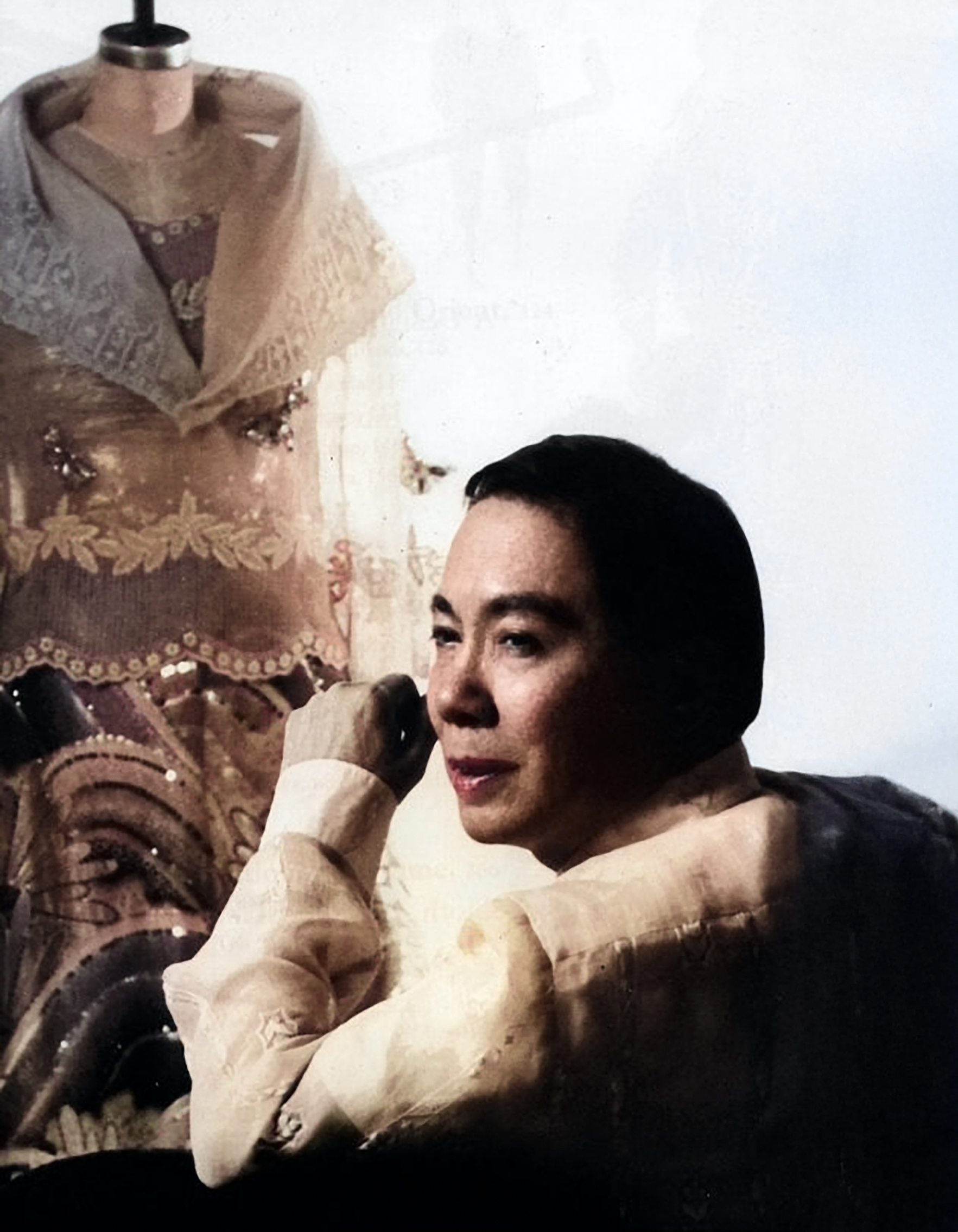
by Jose Carlos G. Campos, Board of Trustees National Museum of the Philippines
My childhood encounter with the famous Pitoy Moreno happened when I was eight years old. My maternal grandmother, Leonila D. Garcia, the former First Lady of the Philippines, and my mother, Linda G. Campos, along with my Dimataga aunts, brought me to his legendary atelier on General Malvar Street in Malate, Manila. These were the unhurried years of the 1970s.
As we approached the atelier, I was enchanted by its fine appointments. The cerulean blue and canary yellow striped canopies shaded tall bay windows draped in fine lace—no signage needed, the designer’s elegance spoke for itself. Inside, we were led to a hallway adorned with Art Deco wooden filigree, and there was Pitoy Moreno himself waiting with open arms—”Kamusta na, Inday and Baby Linda,” as he fondly called Lola and Mommy.
“Ahhh Pitoy, it’s been a while,” Lola spoke with joy.
“Oh eto, may kasal na naman,” my mom teasingly smiled.

Linda Garcia Campos and Pitoy Moreno’s friendship started when they were students in the University of the Philippines in Diliman.

When Dame Margot Fonteyn came for a visit to Manila, Pitoy Moreno dressed her up for an occasion.
We had entered a world of beauty—porcelain figurines, ancient earthenware and pre-colonial relics. It was like stepping into a looking glass, only Pitoy could have imagined.
Destiny led me back years later when my mother Linda told me that Pitoy Moreno was working on his second book, Philippine Costume, and needed research material and editorial advice. At this point, around the 1990s, I was in between assignments—unsure of how a broadcasting graduate like me could possibly contribute to a fashion icon’s masterpiece. Fortunately, I agreed to the project.
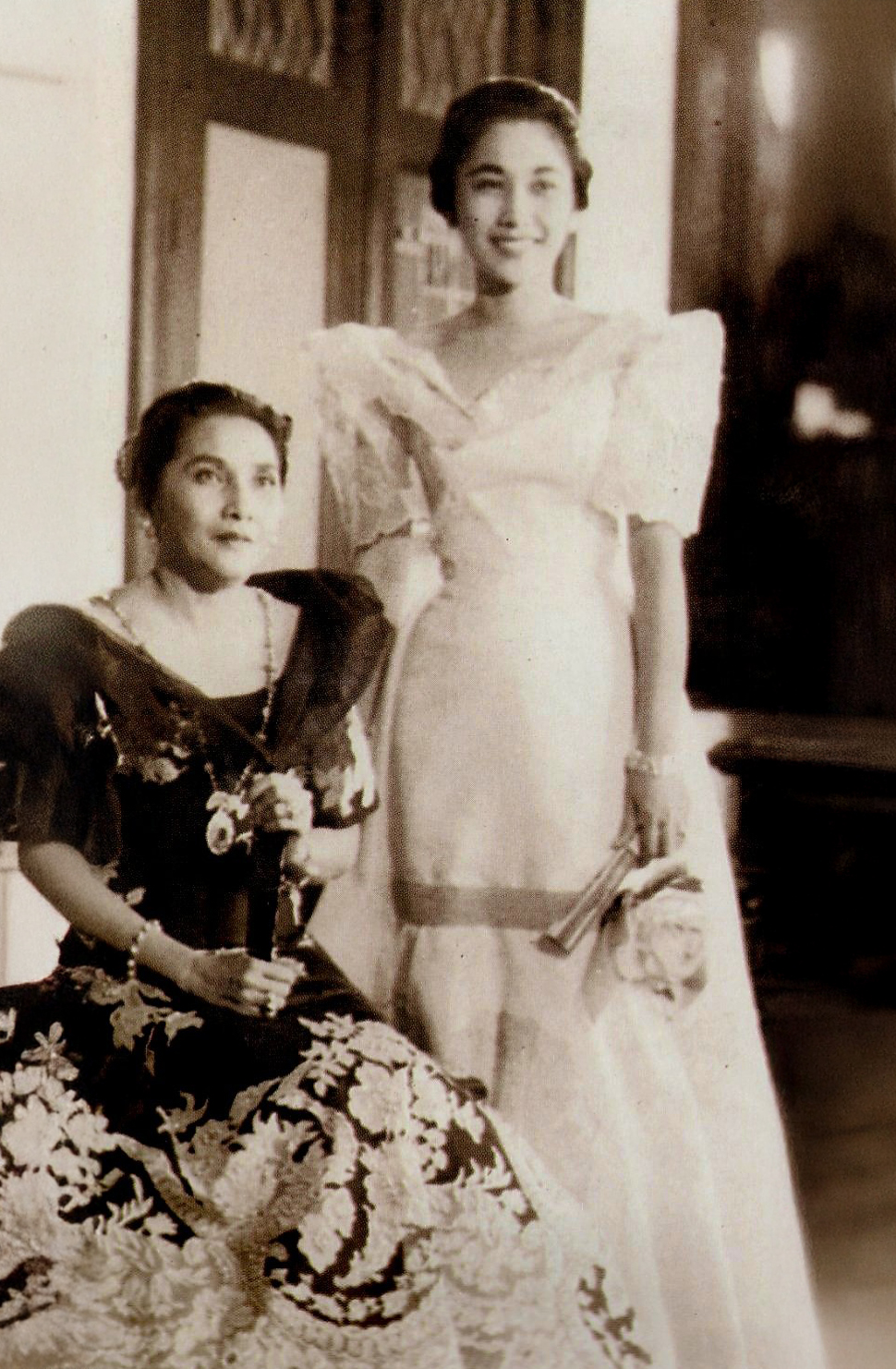
Former First Lady Leonila D. Garcia and daughter Linda G. Campos in Malacañang Palace.
Returning to the designer’s atelier brought back a rush of pleasant memories. The gate opened, and there stood Pitoy Moreno, beaming as always.
“Come in, hijo. Let me show you what I have in mind—and call me Tito Pitoy, okay?”
He led me to his worktable.
“I want to publish a book that tells the story of Philippine fashion—from our pre-colonial roots to the present. A designer’s collection of images and heritage expressed in clothing.”
I was awestruck. “How can I help you?” I inquired.
“Did you know that your mother, Linda, was my barkada in the University of the Philippines in Diliman?” he grinned.
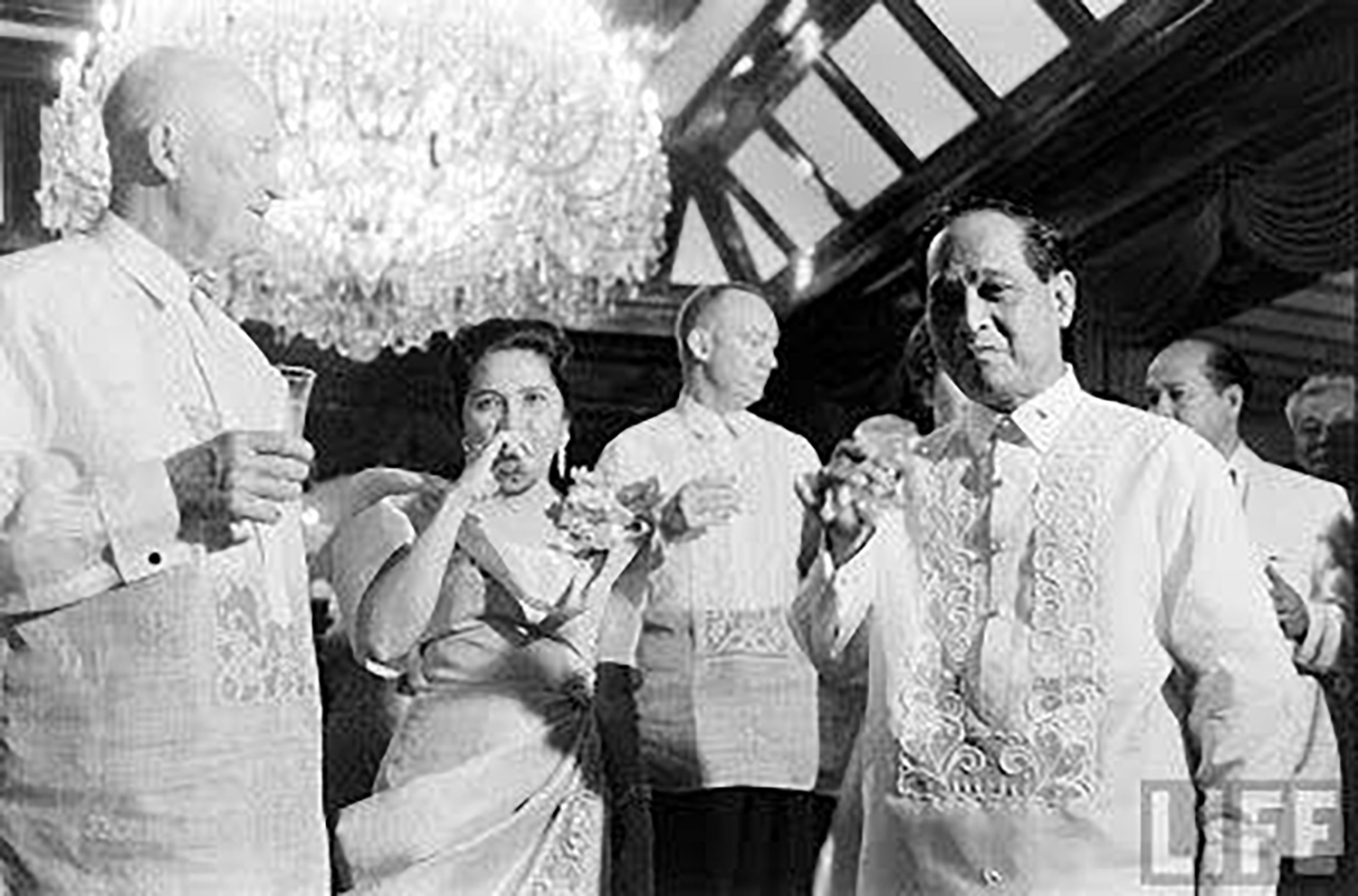
US President Dwight Eisenhower with First Lady Leonila Garcia and President Carlos Garcia in a state dinner at Malacañang Palace in Manila.
That friendship soon led to one of the proudest moments of the designer’s life. He had the opportunity to dress not only the First Lady Leonila D. Garcia but also President Carlos P. Garcia during his term. It was also during this time that the President of the United States, Dwight Eisenhower, came for an official visit to Manila. The designer was able to make clothes for the President, his daughter, and his staff.
“Eisenhower even asked for discounts on the barong Tagalog,” Tito Pitoy laughed.
Tito Pitoy then asked if I could find a terno he had made for my Lola, the former First Lady, which she wore for President Eisenhower’s state visit in 1960.
“How about her other ternos, dated from the 1920s to the 1960s?” I offered.
He lit up.
I scoured my Lola’s extensive closet—it felt like unearthing a legacy. Tucked behind layers of vintage ternos from countless fashion designers, I found that terno, which was photographed by Dick Baldovino along with other pieces for the book project. Once the project was finished and I myself had moved on, my bond with Tito Pitoy never wavered.
When my Lola passed away, he was deeply touched when I personally informed him of the sad news. Once, at the wake of former Vice President Salvador Laurel, he asked me to assist him in the placement of the medals in the chapel.

Philippine Costume by Jose Moreno is the designer’s collection of images and heritage expressed in clothing.
Tito Pitoy later invited me to his 80th birthday celebration—a dazzling Manila affair in 2012. During the evening’s festivities, he handed me a printed copy of Philippine Costume and added warmly,
“Thank you, hijo. I’ll call on you for the next one.”
The highlight of his career—and his most unforgettable moment—came during the Metro Magazine Gala fashion show: A Tribute to Pitoy Moreno, Fashion Icon. A collection of evening gowns spanning six decades—many of them unseen and tucked away in his atelier—were revealed that night. When the finale came, Tito Pitoy walked the stage, triumphant and waving to a sea of admirers. Longtime friends from the industry, society’s finest, and fashionistas rose from their seats and gave him a standing ovation.
It wasn’t just to celebrate his craft and ingenuity—it was to honor the man who brought elegance, history, and heart in every stitch.
-

 Style2 months ago
Style2 months agoHappy Melendres Traipsing Around Manhattan in Non-Stop Armani
-

 Arts & Culture3 months ago
Arts & Culture3 months agoKultura. Kapital. Kasalukuyan: Art that Speaks of Today
-
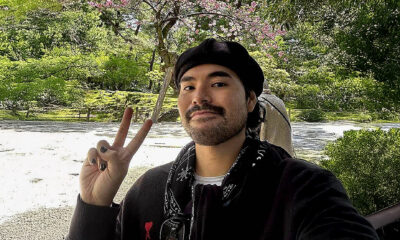
 Prime Target2 months ago
Prime Target2 months agoMiko Sarmiento: Turning Silk Scarves Into Works of Art
-
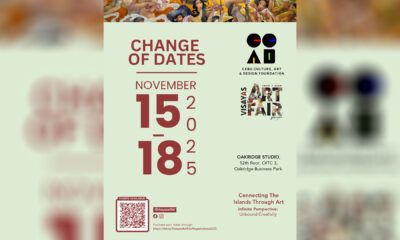
 Arts & Culture1 month ago
Arts & Culture1 month agoVisayas Art Fair Year 5: Infinite Perspectives, Unbound Creativity
-

 The Scene3 months ago
The Scene3 months agoAnother Elegant Dinner at Chez Marguerite
-

 Prime Target3 months ago
Prime Target3 months agoLuna Vdl–Endless Summers in Siargao
-

 The Scene3 months ago
The Scene3 months agoA Stylish Soirée: Cebu’s Elite Celebrate Jackie Deen Lotzoff at Mad Thai
-

 QuickFx2 months ago
QuickFx2 months agoI Lost It at the Movies: Five of the Most Significant Films of the 1960s












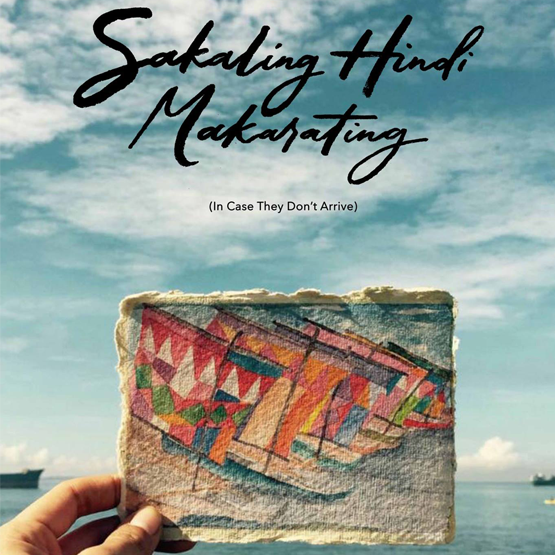




You must be logged in to post a comment Login